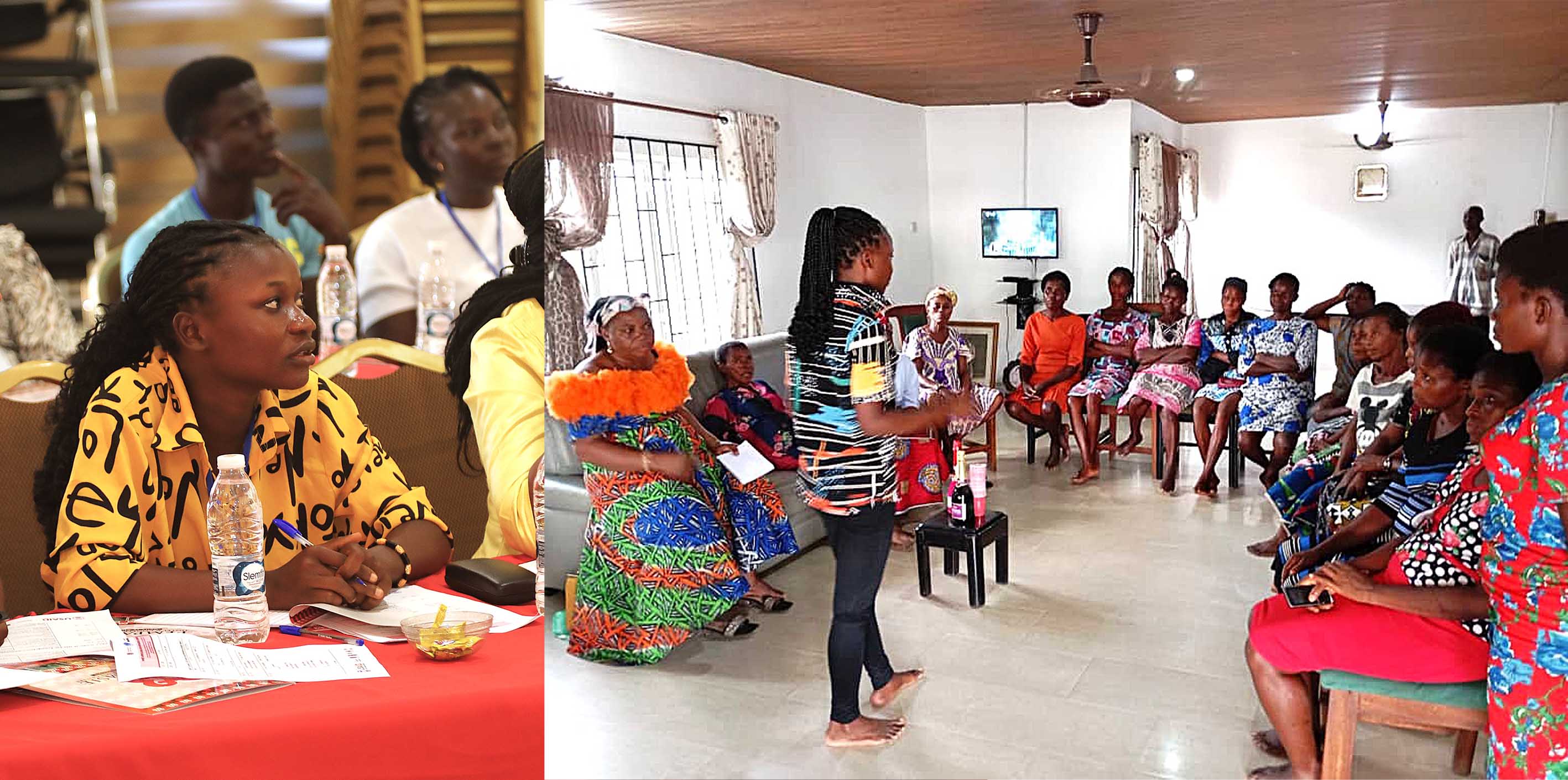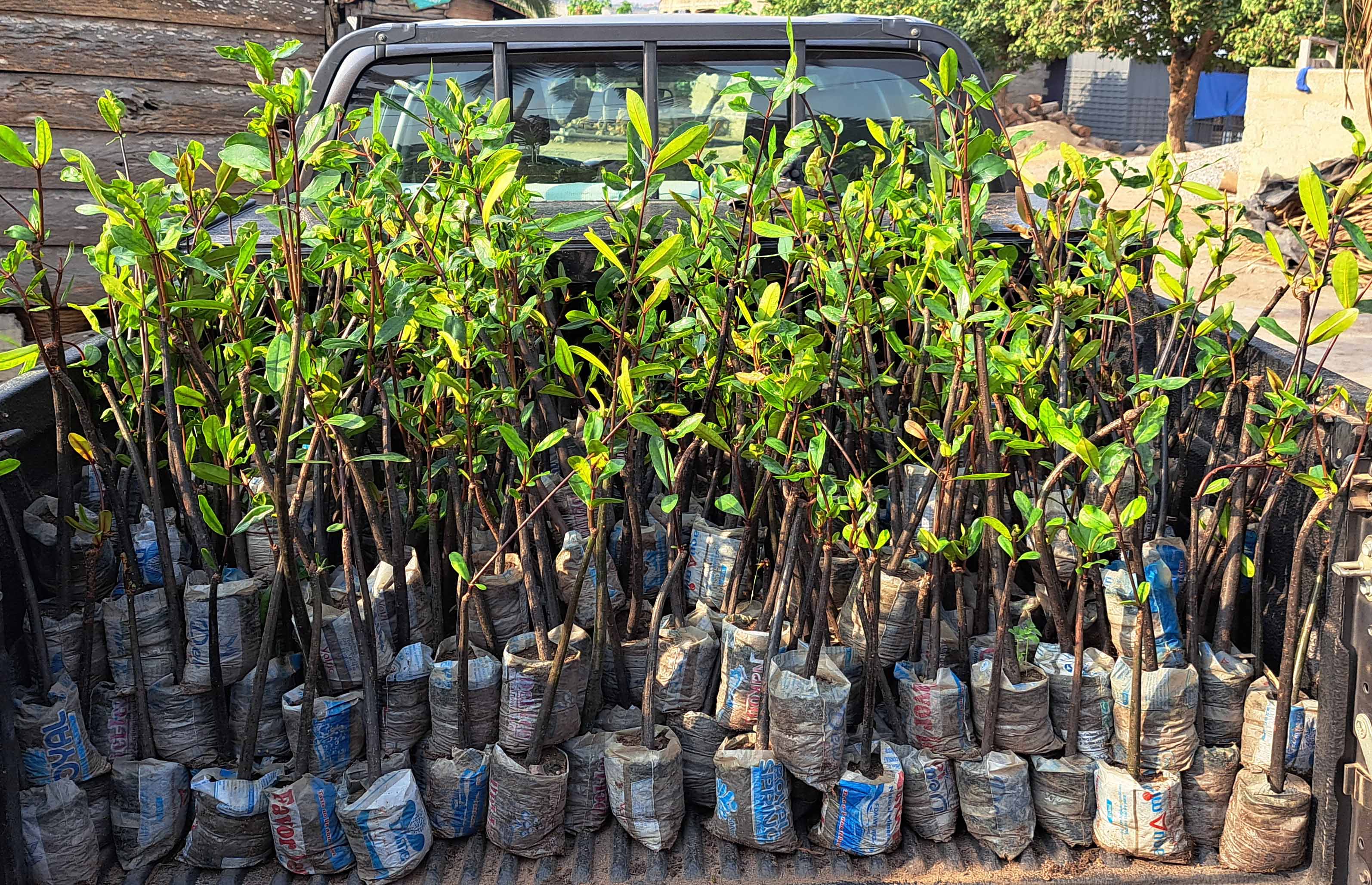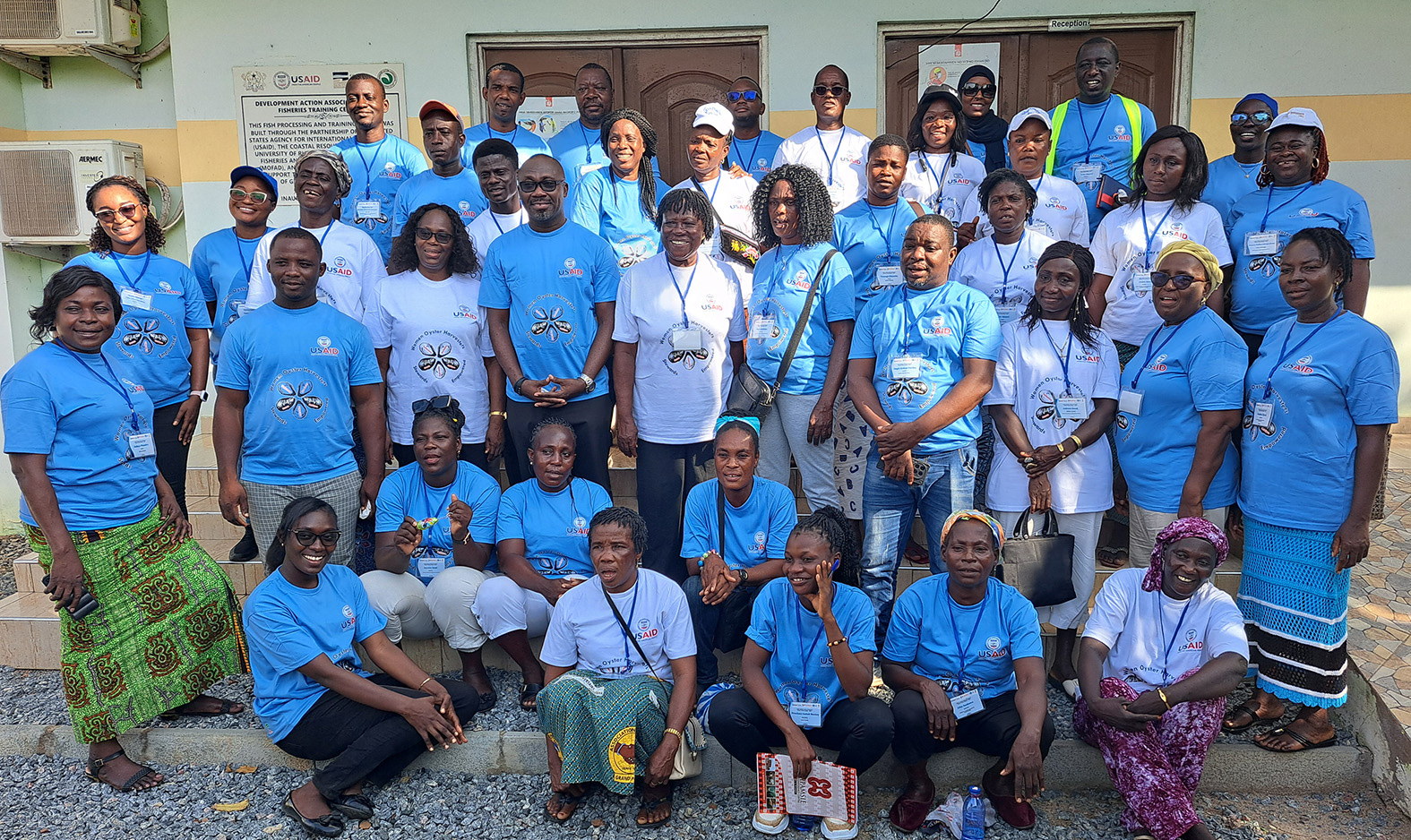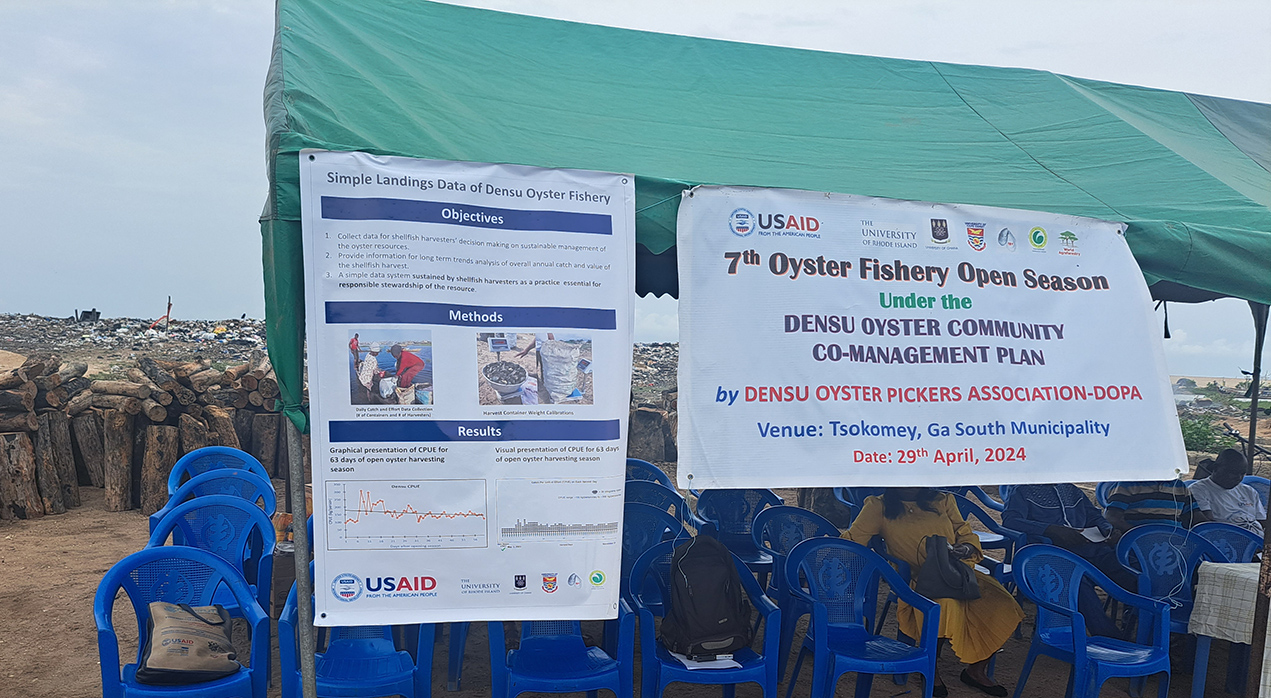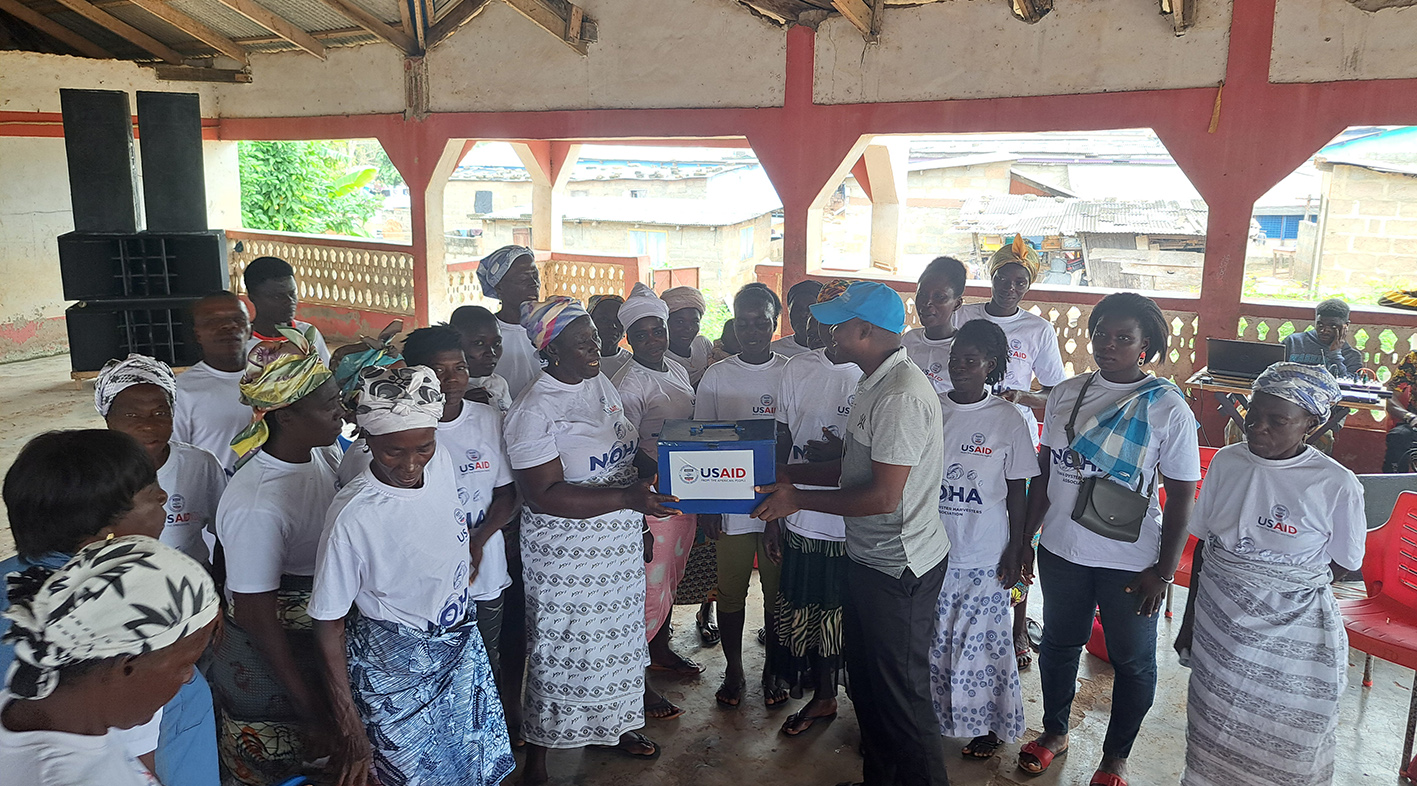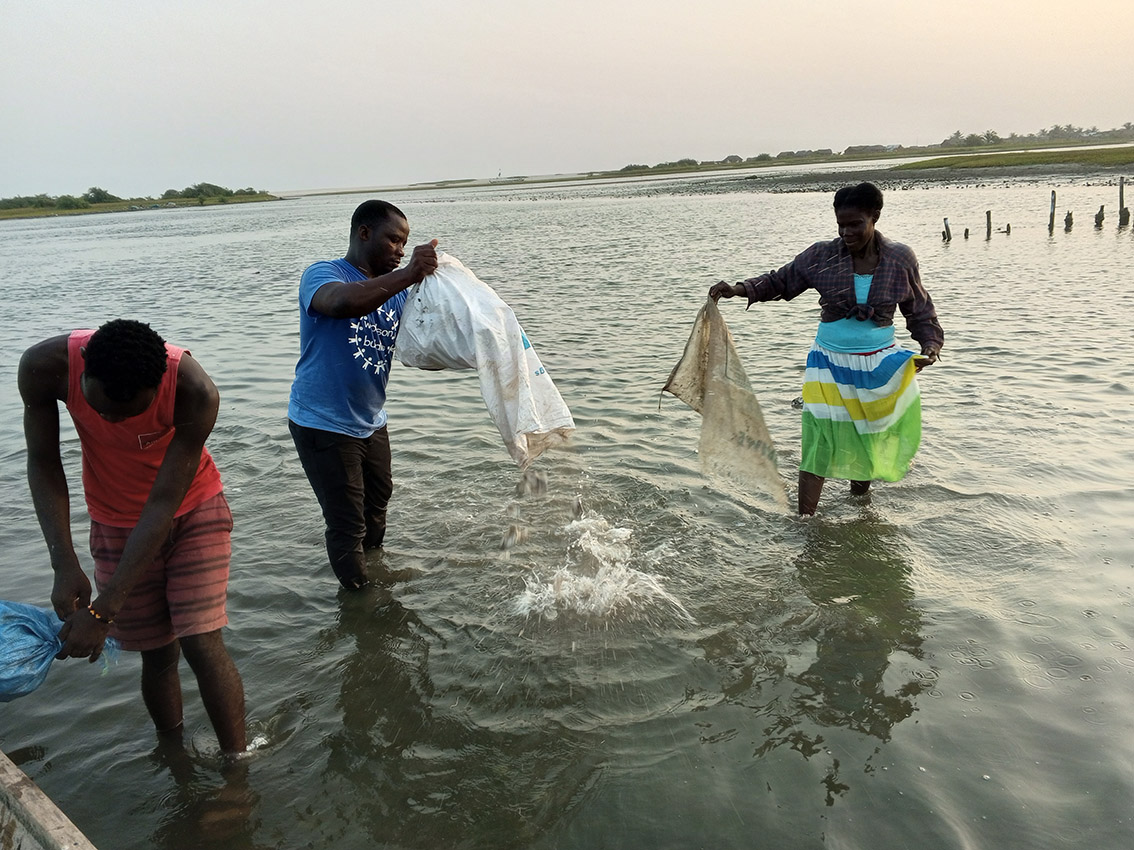Country
Profiles
Country
Networks
Country
Associations
Ghana
Overview
Ghana is a West African country bordered on the north, east, south, and west by Burkina Faso, Togo, Gulf of Guinea (Atlantic Ocean) and Côte d’Ivoire, respectively. The coastal area of Ghana stretches over 550 km, covering four coastal regions namely Volta, Greater Accra, Central and Western Regions. Ghana has 108 coastal water bodies, 15 are in the Volta Region, 14 in the Greater Accra Region, 38 in the Central Region and 41 in the Western Region. These water bodies comprise closed lagoons, open lagoons and estuaries with its accompanied mangrove vegetation, mud and tidal flats and marshes, which support many commercially important fisheries. Five of the coastal water bodies in Ghana comprising the Keta, Muni, Sakumo, and Songor lagoons, as well as the Densu Delta, are designated as Ramsar sites. The primary occupation of the coastal inhabitants is fishing, and fish-related businesses of which women form an integral part.| Basic Contextual Information | |
|---|---|
|
Country
|
Ghana
|
|
Total land area
|
238,535 km²
|
|
Population
|
29.77 million (2018)
|
|
Percentage population living in/near the coast
|
25%
|
|
Gross Domestic Product (GDP)
|
65.56 billion USD (2018)
|
|
Human Development Index (HDI)
|
0.596 (142 out of 189)
|
|
Length of coastline
|
550 km
|
|
Fish consumption (as percent of animal protein)
|
50–80%
|
|
Anaemia prevalence
|
78.4% among under-five children 46.4% among women of reproductive age (15-49)
|
|
Estimated mangrove cover
|
20,418 ha
|
|
Estimated estuarine and mangrove ecosystem-based shellfish harvesters
|
4,333
|
|
Estimated women shellfish harvesters (percent)
|
3,813 (88%)
|
|
Estimated direct household beneficiaries
|
31,731 (60% female)
|
|
Number of coastal systems with mangrove-based shellfishing
|
11
|
|
Shellfish management regulations
|
Oyster Fishery Co-Management Plan for the Densu Delta
|
|
Mangrove management regulations
|
--
|
|
Coastal ecosystems with shellfisheries identified in Ramsar sites
|
Densu Delta = 5,893 ha Keta Lagoon Complex = 101,022 ha
|
Largely, the exploitation of shellfisheries in Ghana has not been accounted for, partly because it is assumed the fishery is not lucrative enough, leading to its neglect in the country’s annual fish production estimation and the necessary interventions for sustained food production and income generation along the coast, especially for women. Shellfisheries provide livelihoods and a cheap source of protein and micronutrients to many coastal dwellers.
Common shellfisheries along the coast of Ghana are bivalves, gastropods, and crustaceans. The West African mangrove oyster (Crassostrea tulipa), West African mud creeper/periwinkle(Tympanotonus fuscatus) and whelk (Pugilina morio) are the most important species by harvest across the study sites. The bivalves and gastropods are exploited by handpicking or diving with improvised footwear. Some crabs (e.g., Cardisoma armatum) are collected by deploying traps with bait. Generally, shellfish are harvested during the dry season from November to March/April, depending on the month the rains begin, while T. fuscatus is harvested year-round in most sites. Nonetheless, the harvesting period for C. tulipa coincides with the rainy season in the Densu Delta, and shellfishers in the Volta Estuary (Tunu) also exploit oysters during the rainy months.
Women are extensively engaged in the harvesting, processing, and trading of the shellfisheries, while men play harvesting roles only, particularly in the Volta clam fishery (Volta Estuary, Big Ada).
The most productive shellfisheries by yield are the Volta clam (Galatea paradoxa) of the Volta Estuary (Big Ada) and C. tulipa fisheries of Narkwa lagoon producing up to 320 kg/day, 5,120 kg/month and 40,960 kg/season as well as 116 kg/day, 1,939 kg/month and 10,859 kg/season, respectively per crew in the case of the Volta clams, and per oyster harvester in Narkwa.
The price per kilogram of shellfish varies within and among coastal communities. P. morio (USD $8.40/kg) and T. fuscatus (USD $3.50/kg) from the Whin Estuary are the highest-priced shellfisheries from all sites assessed. The Volta clam fishery generates the highest revenue of USD $1,106.90/month for a crew of harvesters.
There are general concerns from stakeholder groups other than the shellfish resource users of the potential consumption of unwholesome shellfish by regular consumers as they perceive shellfish harvesting areas to be polluted with faecal matter and possibly heavy metals.
Mangrove vegetation in all the study sites is exploited to some extent. In the Amanzule, Whin, and Amissano estuaries, as well as Narkwa Lagoon, mangrove coverage is described by resource users as high to moderate, whereas that of the Keta Lagoon and Densu Delta is said to be low.
All the study sites support open-access fisheries. Moreover, the fisheries are unregulated, except for the Densu Delta oyster fishery and Volta clam fishery, co-managed in a gazetted community-based plan (MoFAD, 2020) and traditionally managed, respectively.
The livelihoods of shellfishers are lost during the unfavourable period of high inundation in the coastal areas caused by rainfall for most shellfisheries, which subsequently affects food (shellfish) security.
Recommendations:
All commercial shellfisheries along the coast of Ghana should urgently be regulated to ensure their rational management, development, and sustainability.
A comprehensive program of action research should be developed to harness the aquaculture potential of Ghana’s shellfisheries, as well as to expand the market and improve the value of shellfish through business models for the various species.
Educating shellfish harvesters on the ecological services provided by shellfish and mangrove systems should be prioritised to promote rational utilisation of the resources.
The use of mangroves as firewood must be discouraged, and degraded mangrove vegetation should be restored by replanting to maintain the ecological integrity of mangroves.
The general sanitation of coastal aquatic systems and their catchment areas should urgently be improved to produce high-quality shellfish, which in turn would stimulate good health and make wild shellfish consumption more appealing.
Shellfish harvesters should be educated and trained in entrepreneurial skills to promote the construction of lucrative varied income sources to better the standard of living of resource users, particularly during the lean or off-season for shellfish harvesting.
Shellfish resource users should be equipped with skills in value addition to generate higher income, extend the shelf life of the product, and possibly penetrate high-value markets.
Shellfishers should be assisted with soft loans and protective gear (i.e., diving apparatus, shucking gloves, waders, etc.) to enhance their businesses.
Reports
-
-
The Estuarine and Mangrove Ecosystem-Based Shellfisheries of West Africa: Spotlighting Women-Led Fisheries LivelihoodsView Technical Report
-
Participatory Assessment of Shellfisheries in the Estuarine and Mangrove Ecosystems of GhanaView Technical Report
-
Literature Review for the Participatory Regional Assessment of the Shellfisheries in 11 Countries from Senegal to NigeriaView Technical Report
-
Oyster Shellfisheries Locations in Ghana and The GambiaView Technical Report
-
West Africa Women-led Shellfisheries Co-Management in a Global Context: Case Studies From Africa, Asia, and South AmericaView Technical Report
-
Site Based Assessment of Oyster Shellfisheries and Biophysical Conditions in Ghana and The GambiaView Technical Report
-
Mangrove Conservation and Restoration Sites Mapping in Ghana and The GambiaView Technical Report
-
Developing Community Action Plans for Mangroves Co-Management in Ghana and The GambiaView Technical Report
-
Progress and Results of Mangrove Replanting in Year 1 and Year 2 in the Densu Estuary, GhanaView Technical Report
-
A review of mangrove and forestry co-management in Ghana and The GambiaView Technical Report
-
Multi-stakeholder review of mangrove restoration initiatives to improve biodiversity in Ghana and The GambiaView Technical Report
-
Value Chain and Economic Analysis of the Shell By- Product of Bivalve Fisheries in Ghana and The Gambia: An Assessment of Oyster, Cockle, and Clam ShellsView Technical Report
-
Multivariate Analysis of the Theory of Change ModelView Technical Report
-
Drivers and Threats Affecting Mangrove Forest Dynamics in Ghana and The GambiaView Technical Report
-
Participatory Landscape Visioning in Densu Estuary, Narkwa Lagoon, and Whin Estuary, GhanaView Technical Report
-
Technical Report on Site Based Research in Ghana and The GambiaLand-seascape Food and Nutrition ProfilesView Technical Report
-
Dietary Intakes, Food Security and Anemia Prevalence Among Women Shellfishers in Selected Estuary Sites in Ghana and The GambiaView Technical Report
-
Assessment of Shellfish Species Diversity and Land Cover at Mangrove Restoration Sites within the Densu Delta Ramsar Site, GhanaView Technical Report
-
Publications
-
-
Spotlighting Women-Led Fisheries Livelihoods Toward Sustainable Coastal Governance: The Estuarine and Mangrove Ecosystem Shellfisheries of West AfricaView Peer-reviewed Article
-
Mangrove ecosystems mapping in parts of Ghana and The Gambia for sustainable regeneration and utilizationView Peer-reviewed Article
-
Presentations
-
No Presentations
Get started by creating a new presentation.
News, Stories & Conversations











